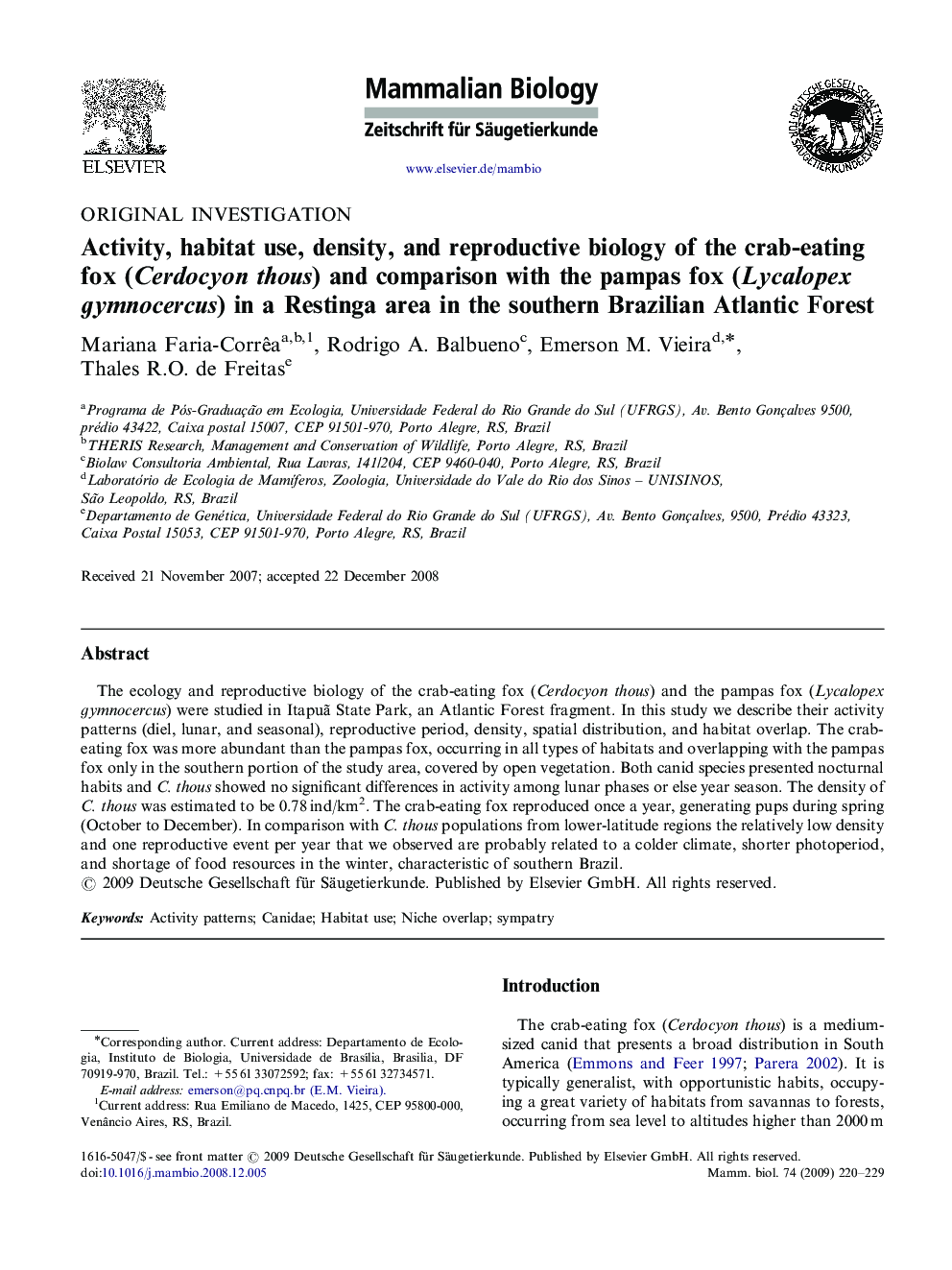| کد مقاله | کد نشریه | سال انتشار | مقاله انگلیسی | نسخه تمام متن |
|---|---|---|---|---|
| 2194354 | 1098434 | 2009 | 10 صفحه PDF | دانلود رایگان |

The ecology and reproductive biology of the crab-eating fox (Cerdocyon thous) and the pampas fox (Lycalopex gymnocercus) were studied in Itapuã State Park, an Atlantic Forest fragment. In this study we describe their activity patterns (diel, lunar, and seasonal), reproductive period, density, spatial distribution, and habitat overlap. The crab-eating fox was more abundant than the pampas fox, occurring in all types of habitats and overlapping with the pampas fox only in the southern portion of the study area, covered by open vegetation. Both canid species presented nocturnal habits and C. thous showed no significant differences in activity among lunar phases or else year season. The density of C. thous was estimated to be 0.78 ind/km2. The crab-eating fox reproduced once a year, generating pups during spring (October to December). In comparison with C. thous populations from lower-latitude regions the relatively low density and one reproductive event per year that we observed are probably related to a colder climate, shorter photoperiod, and shortage of food resources in the winter, characteristic of southern Brazil.
Journal: Mammalian Biology - Zeitschrift für Säugetierkunde - Volume 74, Issue 3, May 2009, Pages 220–229